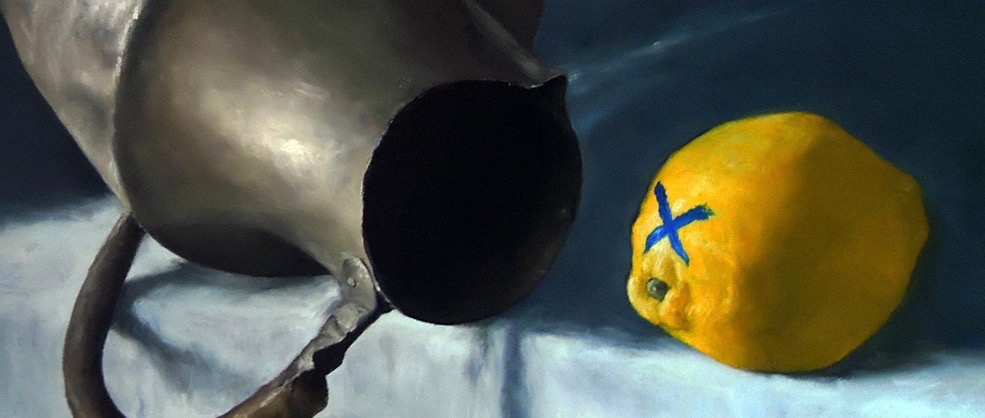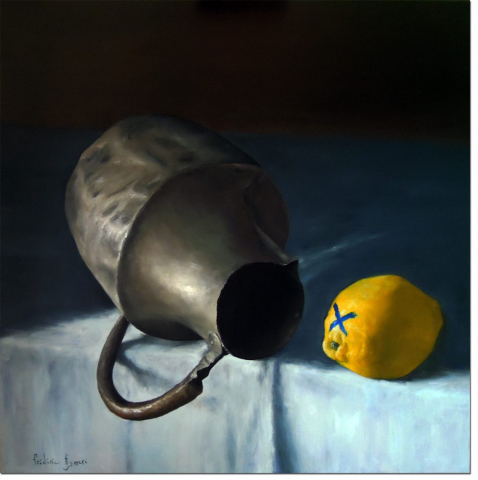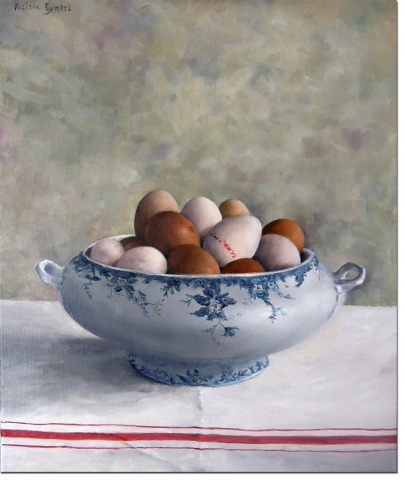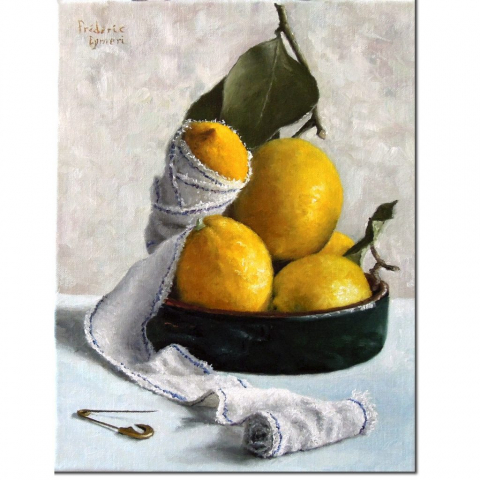

Le Choix
Only wonderment leads to true knowledge, concepts create idols
I unveiled this painting a few days ago and, almost immediately, the inevitable question arose:
– “Why this cross on the top of the lemon?” What kind of an idea do you want to convey?
Justified as the question may be and willing as I am to always answer it, I do not like to explain my paintings. What stands at the origin of the act of creation is not an idea but an experience. An experience looks like an encounter. It’s impossible to explain an encounter without depriving it from a part of the mystery it carries. In order to express itself, the experience takes a shape: the very painting! Somehow, the painting is the best answer to the question it raises.
The painter Nicolas de Staël wrote: “One never paints what one sees or believes to see. One paints a thousand of vibrations, one paints that which struck ones.” As I see it, the work of the artist is to put into a sensitive medium, the essence of an experience that is, by nature, non-sensitive. The more the experience is real and intense, the truer it is, the more the proposal to enter into “that which strikes us” is significant and persistent. To try and explain an artwork through didactic reasoning is, in a way, to keep oneself away from the experience suggested by the artwork itself. To reduce art to a concept is to cut it off from its origin and its purpose. Saint Gregory of Nyssa ‘s “Only wonderment leads to true knowledge, concepts create idols.” suggests anew the stance we should take in front of reality – that is, the one of a child. I believe this holds particularly true when we contemplate a painting, read a poem, or listen to a Sonata (and even more so when we create them!)
A work of art is the shape through which the mystery seeks to be actualized. Since the origins of the human race, the strength and the very reason of art have been to offer a conversation with the mystery. People do not go to museums and concert halls only to get more knowledgeable or feel ephemeral emotions. Much deeper, the expectation to find a meaning and a presence leads them toward artworks as to the locus where leaving meaninglessness and loneliness behind is indeed possible. The artwork is, at its roots, this “set-apart-reality”, this sanctuary, which opens the person up to wonderment by the mere fact that it exists.
Frédéric Eymeri


